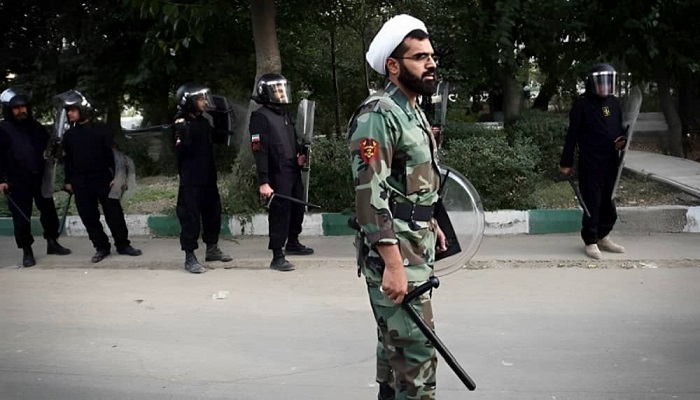
This internal fatigue is revealing a growing sense of despondency and helplessness within the regime. In a recent address on state-controlled television, Sadeghi highlighted the danger of despair and emphasized the importance of maintaining resilience. He likened the challenges faced by the regime to an “economic war,” and while acknowledging internal and external threats, asserted that with divine grace and hopefulness, the regime would overcome these adversities.
However, the undeniable sentiment of hopelessness and fatigue is not limited to just Sadeghi’s remarks. The Supreme Leader, Ali Khamenei, himself has underscored the importance of not succumbing to fatigue and desolation. Khamenei’s speech to the Revolutionary Guard commanders in August emphasized the need for unity and diligence. He addressed the inherent vulnerabilities of human error, stressing the importance of avoiding mistakes that could lead to the downfall of the regime.
Watch and judge how #Khamenei who has been ruling #Iran for more than 30 years is now suffering from the "Enemy complex"! pic.twitter.com/QQ3KK3VrnV
— NCRI-FAC (@iran_policy) September 13, 2023
In light of the 2022 uprising, which posed a significant challenge to Khamenei’s regime, the Supreme Leader used the anniversary of the 2019 uprising to rally his supporters and stress the importance of remaining hopeful and vigilant against external and internal threats.
In a stark plea at the beginning of the Iranian calendar year, Khamenei urged state media and officials to inspire hope in the public and particularly the youth. The core message was to guard against the youth’s inclination towards dissent.
Watch and judge why #Khamenei has a defection problem pic.twitter.com/4D7KtV20Lg
— NCRI-FAC (@iran_policy) June 8, 2023
However, these repeated pleas and admonishments from the Supreme Leader and regime officials reveal a more profound unease. The numerous resignations and dismissals within the regime’s ranks, both in civilian and military leadership, are testament to the declining faith in Khamenei’s leadership. This sentiment was candidly expressed by an IRGC commander, Hamid Abazari, late last year, although the Revolutionary Guards quickly denied his remarks.
Currently, the regime grapples with significant international isolation and growing societal unrest. While Iran has witnessed uprisings since the 1990s, the primary focus of the populace’s fatigue is the oppressive regime itself. The Khamenei regime’s increasing reliance on mercenaries, driven by financial motivations due to their dwindling resources, signals an impending burnout of their security forces.
#Iran News in Brief
IRGC officer: "I don't know what comes next. I've seen great people quitting. Even some of my own superiors. Those who fought in the war and were wounded. These people defied our values, defied the leader and the state."#IranRevolutionhttps://t.co/tB3rTuSSRI pic.twitter.com/CKub6cEXdj— NCRI-FAC (@iran_policy) December 28, 2022
Contrastingly, the Iranian Resistance, a beacon of hope for many, has steadfastly endured for nearly six decades, longer than the regime itself. With this Resistance group rising from near extinction to global influence, the answer to “who tires first” between the people and the regime is becoming crystal clear.

MEK Iran (follow us on Twitter and Facebook), Maryam Rajavi’s on her site, Twitter & Facebook, NCRI (Twitter & Facebook), and People’s Mojahedin Organization of Iran – MEK IRAN – YouTu







